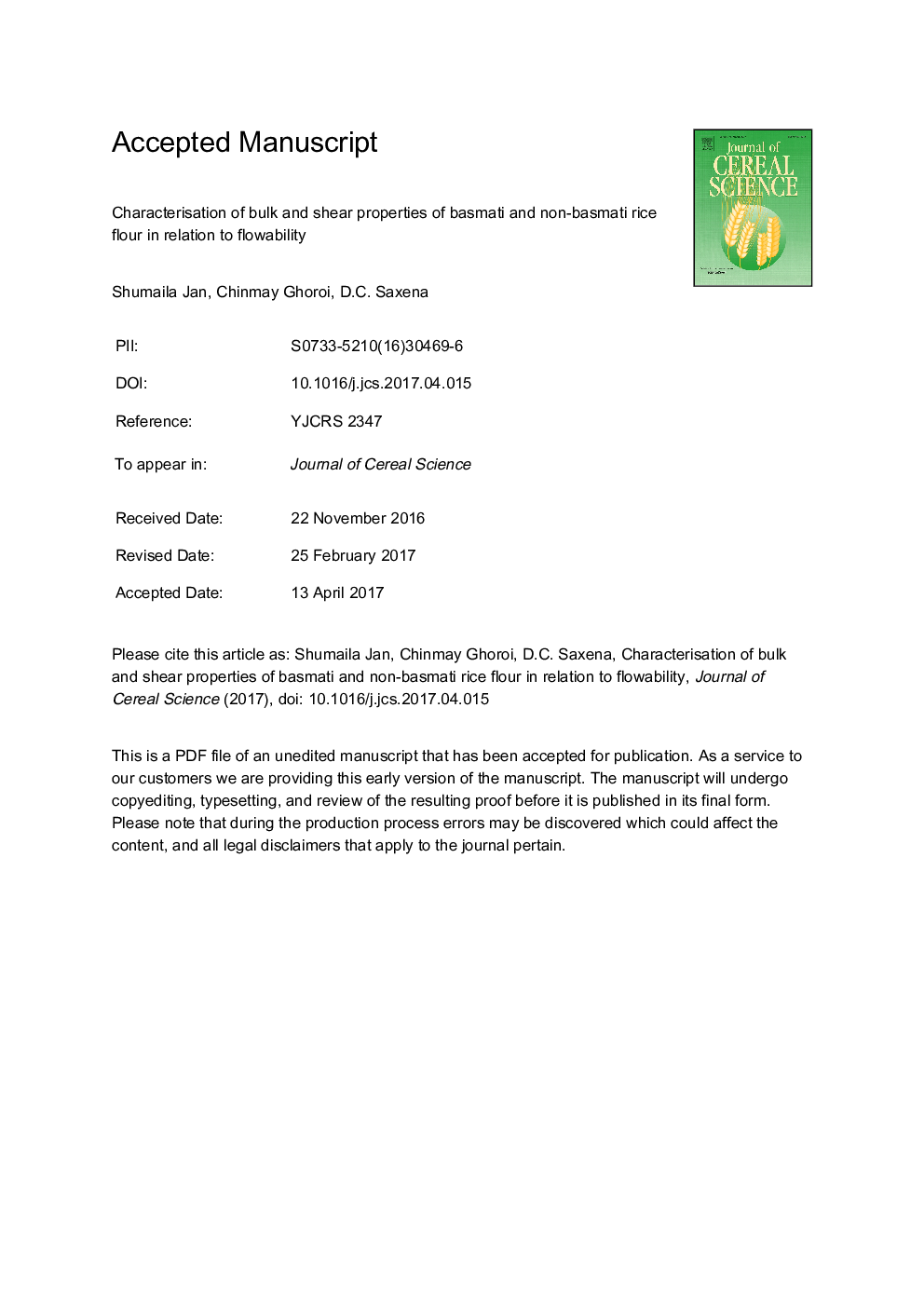| Article ID | Journal | Published Year | Pages | File Type |
|---|---|---|---|---|
| 5762331 | Journal of Cereal Science | 2017 | 26 Pages |
Abstract
The present study was conducted to compare the flowability of basmati and non-basmati rice flour with commercially available rice flour. Dynamic and shear properties were characterized on the basis of particle size, shape and surface roughness (measured by Atomic Force Microscope) depending upon the processing conditions. In contrast to commercial rice flour having less particle size (65.3 μm), the particle sizes (171.1-171.9 μm) of both the samples were not significantly different. However, the flowability of the non-basmati rice flour was significantly affected by its particle shape (0.487), surface roughness (124.23 nm) and compressibility (25.32%), making it more cohesive than basmati rice flour but less cohesive than commercial rice flour (1.34 kPa). Also, basic flow energy was significantly higher in both commercial rice flour and non-basmati flour, thus required more energy (197.42 mJ and 147.54 mJ, respectively) to flow than basmati rice flour (130.15 mJ). Overall, flowability was analysed by applying three different pressures (3, 6 and 9 kPa) and among which commercial rice flour was found less flowable (2.26 at 9 kPa) followed by non-basmati rice flour (2.33 at 9 kPa) and basmati (3.35 at 9 kPa) causing bulk handling difficult.
Related Topics
Life Sciences
Agricultural and Biological Sciences
Agronomy and Crop Science
Authors
Shumaila Jan, Chinmay Ghoroi, D.C. Saxena,
